Future Vision
Jul 20, 2013


Out of the wreck of what was Christchurch, a new city is being planned. Kaituhituhi Howard Keene reports.
Photographs: Giora Dan and supplied.
Above: Rakiihia Tau Sr., Ūpoko o Ngāi Tūāhuriri.
It may be a world first situation. In the wake of a devastating natural disaster, the local indigenous people are involved in the redesign and reconstruction of a city from the highest governance level right through to the actual physical reconstruction.
Academics are calling it globally unique, the city’s mayor says it is the way it should be, and Te Rūnanga o Ngāi Tahu kaiwhakahaere Tā Mark Solomon says it is the best expression of the Treaty relationship he has ever seen.
Thirteen years ago, Ngāi Tahu would not have been the partner of choice for the rebuild of Ōtautahi. But after its century-old Treaty of Waitangi claim was settled in 1999, the iwi made quick work of restoring its political, cultural, and economic influence.
However, Christchurch remained visually and culturally dominated by English aesthetics and values.
That was the situation until two-and-a-half years ago.
Enter Rūamoko. On September 4, 2010, February 22, 2011, and many occasions afterwards, major earthquakes broke the back of the city and allowed the old wetlands to temporarily re-establish themselves, leaving swathes of land, especially in the east of the city, uninhabitable.
It was a traumatic series of events causing death and extreme adversity. But out of the wreck of what was Christchurch, a new city is being planned, and the Government has given Ngāi Tahu a prominent role in that process.
It is seen as a chance to build, more or less from scratch, a post-colonial city, inclusive of everyone; and a city with a strong recognition of the mana whenua of local hapū, Ngāi Tūāhuriri.
“You don’t see much at all relating to the Māori heritage and history of Christchurch, but it’s huge,” says Te Rūnanga o Ngāi Tahu kaiwhakahaere Tā Mark Solomon, in his office high up in the control tower of the former Wigram Air Force base.
“It’s a known that there are two stories that belong to the heritage of this nation, and for a long time only one story has been predominant.”
In March, 2011 the Canterbury Earthquake Recovery Authority (CERA) was created as a Government department with extraordinary powers to develop and manage the recovery strategy. For the bodies that needed to be consulted, Ngāi Tahu was co-opted on equal footing with the Christchurch City Council, the Waimakariri and Selwyn district councils, and Environment Canterbury.
Ngāi Tahu is part of the steering group for CERA’s recovery strategy and is leading the Iwi Māori Recovery Programme, which aims to ensure that recovery issues specific to Ngāi Tahu, ngā papatipu rūnanga and Māori in greater Christchurch are identified and implemented. Ngāi Tahu is also represented on CERA’s Recovery Strategy Advisory Committee and as Community Wellbeing planners; as well as being involved in the development of CERA’s Land Use Recovery Plan.
CERA chief executive Roger Sutton describes Ngāi Tahu as an important and highly valued partner of CERA in the earthquake recovery. “I’ve always enjoyed working alongside its leaders. Ngāi Tahu staff have also been seconded to CERA to provide direct input into CERA’s work, and are consulted on a variety of recovery issues.”
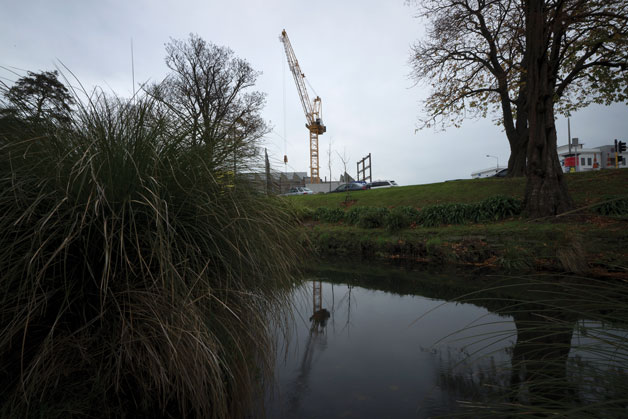
Christchurch Mayor Bob Parker says this role for Ngāi Tahu is exactly how it should be. “I just see it as honouring the spirit of the land in which we all live.
“It’s been a wonderful evolution from what were very, very difficult times. Very unjust crimes were perpetrated on Ngāi Tahu that have gradually been corrected. It must be extraordinarily rewarding for the kaumātua to reflect on just how far Ngāi Tahu has come in Christchurch and Canterbury in the last 30 years.”
The rebuild has been described by Canterbury Employers’ Chamber of Commerce CEO Peter Townsend as the biggest economic development project ever in New Zealand “by a country mile”.
As well as potential economic benefits, the rebuild is also a great opportunity for the tribe to reflect Ngāi Tahu histories and stories on an equal footing with colonial histories in the planned vibrant new city.
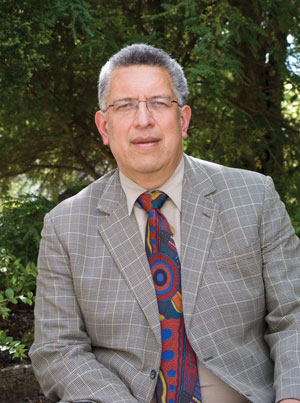
Lincoln University Assistant Vice Chancellor, Professor Hirini Matunga [Ngāi Tahu, Ngāti Māmoe, Ngāti Porou, Ngāti Kahungunu, Rongowhakaata, Ngāti Paerangi (Atiu, Cook Islands)] says as far as he knows, this relationship is unique and unprecedented. “This is a reflection of the mana of Ngāi Tahu and Ngāi Tūāhuriri in a now post-Treaty settlement city context.”
He says the original blueprint for Christchurch was largely planned in England at a time of extreme marginalisation of Māori during early stages of colonisation.
For Rakiihia Tau Sr., Ūpoko o Ngāi Tūāhuriri, issues around the rebuild are Te Rūnanga o Ngāi Tahu matters. “I’ve told them to do the rebuild in accordance with the will of the people. Get the rebuild done as harmoniously and peacefully as it can be.”
Of his peoples’ interest in the area in pre-European times he says: “The memories are there and we may be able to improve on the memories and the preservation of the environment. It was a swamp and the importance of the area in terms of the resource was water, so let’s hope we’ll be able to recognise that and highlight the importance of water.”
Under the Treaty settlement Ngāi Tahu’s partnership role in many areas has been acknowledged and acted upon, but Tā Mark is in no doubt the earthquakes sped up Ngāi Tahu’s rise to prominence in city affairs.
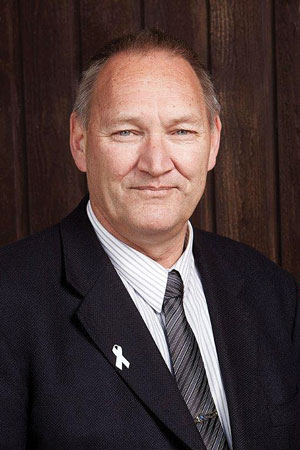
“I was quite shocked when the CERA legislation came out that we were legislated into it. It was a positive shock, but I didn’t expect it.
“We do have the right to sit on different bodies through our settlement, but if you read the apology it talks about a new form of relationship going forward. I would argue that the CERA legislation is probably the best expression we’ve seen of the Treaty relationship without a specific Treaty clause.”
In the immediate aftermath of the February earthquake Te Rūnanga set up a sub-committee, Te Awheawhe Rū Whenua, which included the chairpersons of all four Canterbury rūnanga, to ensure that Ngāi Tahu led and responded to peoples’ needs at the time. That response phase lasted for about 18 months and the organisation is now focusing on recovery.
Rakihia Tau Jr. was the general manager of Te Awheawhe Rū Whenua. He says Ngāi Tahu has some values it wants to see articulated in the city and its rebuild.
“I think we want it to be reflective of our Ngāi Tahu culture, but also of the Pākehā culture. We have to respect their heritage and their values. Some of those values we share.”
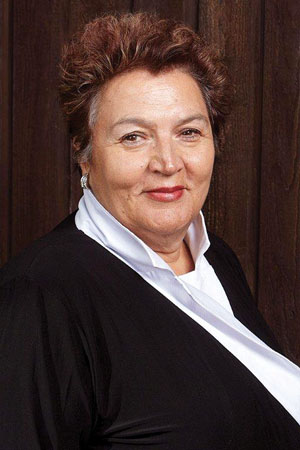 The current chair of Te Awheawhe Rū Whenua Elizabeth Cunningham says the tribe’s response to people’s needs after the earthquake was automatic. Even though phones were out, the marae system kicked in. “People knew where to go, who to assist, how to feed people, where all the old people were. We performed almost like a local body – everyone knew their role.”
The current chair of Te Awheawhe Rū Whenua Elizabeth Cunningham says the tribe’s response to people’s needs after the earthquake was automatic. Even though phones were out, the marae system kicked in. “People knew where to go, who to assist, how to feed people, where all the old people were. We performed almost like a local body – everyone knew their role.”
But it is not just looking after individuals and communities where Ngāi Tahu has shown leadership. Many of the tribe’s wider, long-term aspirations have been taken on board in the blueprint for the reconstruction of the Christchurch CBD, released last year.
Tā Mark says Ngāi Tahu collectively supports the blueprint. “There was enough in it to show Canterbury that we’re starting to move forward. I’ve heard some that disagree with parts of it, some that like the majority of it, but it was enough to start because we needed to show people that progress was happening.”
The cultural aspects are especially important. Key priorities include putting some Ngāi Tahu names back on the Christchurch landscape, rejuvenating the Ōtākaro (Avon) River system, and recognising places of historic importance to Ngāi Tūāhuriri.
“The concept of having the river planted from Hagley Park to the sea and showing what it was like really gels with us. That doesn’t mean we take out the exotics. I love our garden city, I love the trees, but it would be nice to see a stretch of it which is pure New Zealand native because it would be good for tourism and good for business,” Tā Mark says.
Te Papa Ōtākaro, the Avon River precinct project, will be the first of the major projects outlined in the blueprint to get off the ground, and will strongly reflect Ngāi Tahu values. It is possibly the most exciting part of the plan from a Ngāi Tahu viewpoint, with a strong recognition of historic use of the area by Ngāi Tūāhuriri.
The concept of continuous parkland from the source of the river to the sea was one of the strong themes that emerged from the Christchurch City Council’s Share an Idea scheme in 2011, in which thousands of residents put forward their aspirations for the new city.
What emerged was a park zoning about 30 metres wide on both sides of the river, extending from Christchurch Hospital to about Fitzgerald Avenue in the east. Victoria Square – formerly Market Square, an important early trading point between Ngāi Tahu and settlers – will be a focal point, which the Council describes as “part of the central city’s spiritual and aesthetic identity”.
Expect cafes, hotels, cycle and walking tracks, and native vegetation; but also expect a significant visual expression of Ngāi Tahu values in the precinct.
Elizabeth Cunningham says the river is the magic for her. “I think about my nannies and the people prior to my nannies that used that river for so many reasons.
“That was the meeting place where our weavers got their flax, that was the place where our guys got all the eels. So I see it as a vision for the future, and that I think for me is what I want the most.”
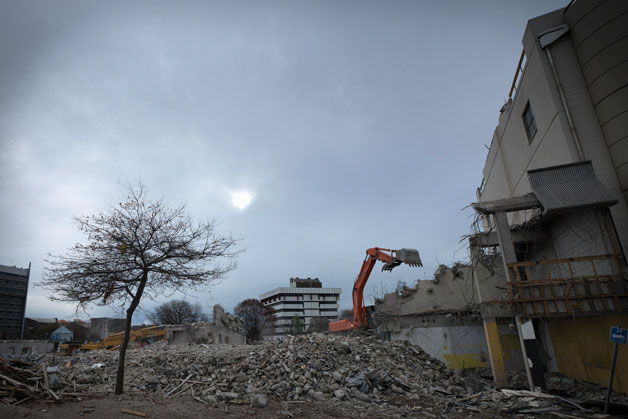
Christchurch architect Perry Royal (Ngāi Tahu, Ngāti Raukawa), working in a private capacity, is part of the consortium drawing up plans for the river precinct. Royal believes the unusual geometry of where the river meets the grid of the city is the nicest part of Christchurch.
He says the whole river corridor is about caring for people. “At one level it’s about the commercial reality that sustains life for us all, and then there’s also the social thing about the river providing the heartbeat or pulse for everybody.”
Mahinga kai will be emphasised, as will places of significance like wāhi tapu and their connections. “Mahinga kai is a tricky one because a lot of peoples’ perception is that it’s almost like a national park where you ring fence it. But for Māori it’s different; it’s about actually engaging with the environment and actually using it.
“To find a sustainable level where humans are part of the mix is a tricky one, especially in an urban sense.” Perry says most Christchurch people are receptive to change at the moment because of what they’ve been through.
“Ngāi Tahu’s no different. One of the really sweet things about this is Ngāi Tahu’s position in relation to this particular land has made sense to a lot of people who aren’t Ngāi Tahu, but just Christchurch people who love the place. It’s home; it’s ratified their affiliation or love of the place where they live.
“One thing Ngāi Tahu gives to the city is that sense of long-term place. We’re here for the long haul, it doesn’t matter whether it shakes, we’ll just live with it.”
One strong idea that emerged through Te Awheawhe Rū Whenua was for a cultural centre, to be called Te Puna Ahurea, in Victoria Square, forming a symbolic waharoa or entranceway to the new city. It was included in the blueprint, but it is still early days for this project.
Te Puna Ahurea’s development would be led by Ngāi Tahu, and would further cement the mana whenua of Ngāi Tūāhuriri and Ngāi Tahu in a city that until relatively recently was virtually blind to their presence.
“There is nothing in concrete, no concept plan has been brought to the tribal council, so it’s a concept as it stands, but of course it will be looked at,” says Tā Mark. “Personally I’d like to see a cultural centre for all peoples.
“I think the last time I heard there were about 180 different nationalities living here. Well, they’re part of the big diversity of our city now, and they all have their own cultural outlooks. These people bring diversity, they bring different views, and I think we should embrace them.”
Tā Mark is adamant the city should be inclusive of other nationalities and cultures. “The way I look at it is these are people we have invited to our country through the processes of government or whatever. To me it’s like if a person comes to my house, knocks on my door and I open the door and invite them inside, I do not have the right to attack them for coming in.”
Tā Mark points to the immediate Māori response to the earthquake. “I know when the Māori community got together on the Wednesday after the earthquake I asked the question, ‘Could we include all migrants?’ and there was a unanimous ‘Yes’. It’s called manaaki, and I think what this earthquake has done if anything is to break down some of those silly barriers.”
Names in the landscape are a powerful representation of a people’s presence, and it is likely more Ngāi Tahu names will appear in the new city, perhaps even in street names.
Elizabeth Cunningham says the issue of names is one she has campaigned on. “I think of my Nanny who came over from Port Levy in the 1900s and wandered these streets. She would have said, ‘We’ve got some nice names too, but they’re not here. What does Colombo Street mean, what does Sydenham mean?’
“So Nanny, I want to make sure there’s some street names here that you would remember and know from your part of the world.”
Hirini Mutunga likes the idea of dual place names starting with Ōtautahi – Christchurch. “Because that’s where the narrative should begin and end.”
Tā Mark believes most Pākehā people would be comfortable with a change in some names. “As I go through Fendalton every second street’s got a Māori name. The people of Fendalton haven’t run screaming because Māori’s being used.”
However, judging from some letters to The Press when the blueprint was announced, there are some people who resent a greater Ngāi Tahu presence in the city.
Cunningham says people should not be afraid. “I look at my son’s age group. They don’t seem to be afraid of saying Māori words. They don’t seem to be afraid of doing the haka.
“We’ve got to get over ourselves. Come on guys – we’re all in this together. We’ve got a beautiful country, we should be proud of it. There’s so many stories to be revealed.”
As one of the biggest property developing companies in the South Island, Ngāi Tahu Property will no doubt have strong involvement in the rebuild, leading some to raise the issue of conflict of interest.
Tā Mark says there’s no open cheque book for Ngāi Tahu. “I’ve read how we’ve got this unfair advantage. I’d like them to show me how, because we have to apply under the same processes as everyone else.”
The rebuild of Christchurch and Ngāi Tahu’s role in it is an aspirational story for many people reflecting on the past and the future.
Hirini Mutunga says in the future he wants to be able to go through the city, and from its image to feel and know he is in Ōtautahi, not Surrey. “If it were able to achieve this, perhaps it could be given the mark of an authentic post-colonial city, and in that sense become a global city that is grounded in this place.”
Ngāi Tahu is also looking to invest in other centres in Te Waipounamu.
Tā Mark Solomon went to Ōtepoti (Dunedin) late last year to meet the mayor and local rūnanga, to look at opportunities for investment in Otago.
“I think the only investments we’ve done in Dunedin, the second city of the South Island, are that we own the police station and we’re part of the Ryman Healthcare facility down there.
“We do need to look at the other regions for investment. We need to balance everything we do. The fact that we had a major earthquake here – it doesn’t make sense to have all our assets, our buildings here in one centre.
“We’re incredibly lucky we only lost one building. We could have lost a whole lot.”
Similarly, there will be investments outside the South Island to spread risk. “You don’t have all your eggs in one basket.”
Te Rūnanga o Ōtākau chairman Edward Ellison says the bulk of Ngāi Tahu investment going to Christchurch has been an ongoing issue for outlying rūnanga, particularly Ōtākau.
“We’ve been raising it at the table and elsewhere, and are keen to see some of the asset that’s been built up applied in the regions, and see some empowerment.
“Christchurch is a big economic hub. You have to look hard to get those opportunities in other areas, but if the partnerships and relationships are built up those opportunities appear or can be generated. They don’t just fall off the wall.”
Edward says it was an issue that needed to be raised. “It’s just the nature of a big corporate organisation and head office-approach to things. That works for Canterbury, but it leaves the wider-flung areas somewhat isolated. So we’re looking for the equity and lift to occur further afield.”